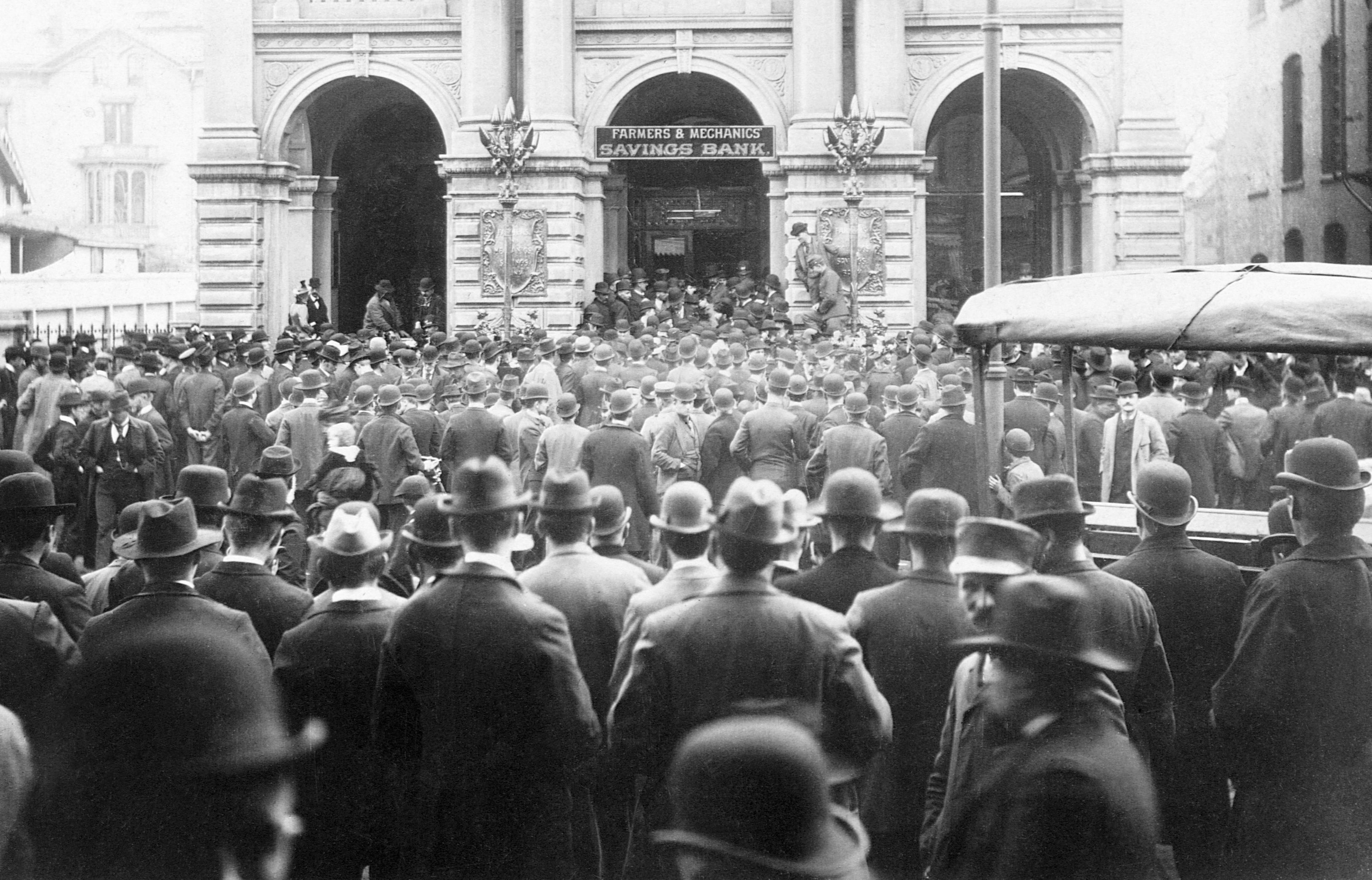Bank runs and the Federal Reserve
Let’s say that our bank (from the Money and banking page) has made the maximum amount of loans, and so its balance sheet looks like this:
| assets | liabilities | ||||
|---|---|---|---|---|---|
| reserves | $1,000 | deposits | $10,000 | ||
| loans | $9,000 | ||||
| total | $10,000 | total | $10,000 |
But then, as sometimes happens, several of its loans, totaling $2,000, “go bad.” That is, they aren’t repaid, and, to all appearances, they aren’t ever going to be repaid. Since those loans are worthless to the bank, its balance sheet now looks like this:
| assets | liabilities | ||||
|---|---|---|---|---|---|
| reserves | $1,000 | deposits | $10,000 | ||
| loans | $7,000 | ||||
| total | $8,000 | total | $10,000 | ||
| net worth | -$2,000 |
The bank’s liabilities—that is, what it owes to depositors—is greater than its assets. When the people who have deposits at this bank hear about this, they will want to get their money because they know that the bank has a negative net worth. This is called a run on the bank.
But if everyone tries to withdraw all of their money from the bank all at once, then the bank can quickly go out of business because it will not be able to cover all of the withdrawals with the money that it has on hand (i.e., held in reserve). If this happens, then most people will lose their money.
This used to be a relatively common occurrence in the United States, but thanks to the Federal Reserve Bank and the Federal Deposit Insurance Corporation (FDIC), it no longer is.

The central bank
The central bank is the institution in each country that carries out monetary policy and regulates the banking system. It performs some functions of a bank—in a way, it is a bank for banks—but we shouldn’t really think of it as a bank.
In the U.S., the central bank is called the “Federal Reserve Bank,” or just the “Fed.”
Bank runs
Although banks sometimes go out of business, bank runs no longer happen in the U.S. (and in most countries) because there are two safeguards in place.
First, there is the Federal Deposit Insurance Corporation (FDIC), which is an independent agency in the federal government (and so it is not part of the Federal Reserve Bank). It insures all bank deposits up to $250,000. Thus, as long a person has less than $250,000 in an FDIC insured account, that money won’t be lost, even if the bank goes out of business. As a result, there is no need to run to the bank if there is a rumor that the bank’s assets are less than its deposits.
Second, the Federal Reserve will, if necessary, make loans to banks when either (i) a bank needs money to cover any immediate transactions for which it does not have sufficient reserves or (ii) a bank does not have enough cash on hand to meet the reserve requirement.
The Federal Reserve also sets the reserve requirements for banks, which prevents banks from making so many loans that it cannot satisfy the normal number of withdrawals that might occur.